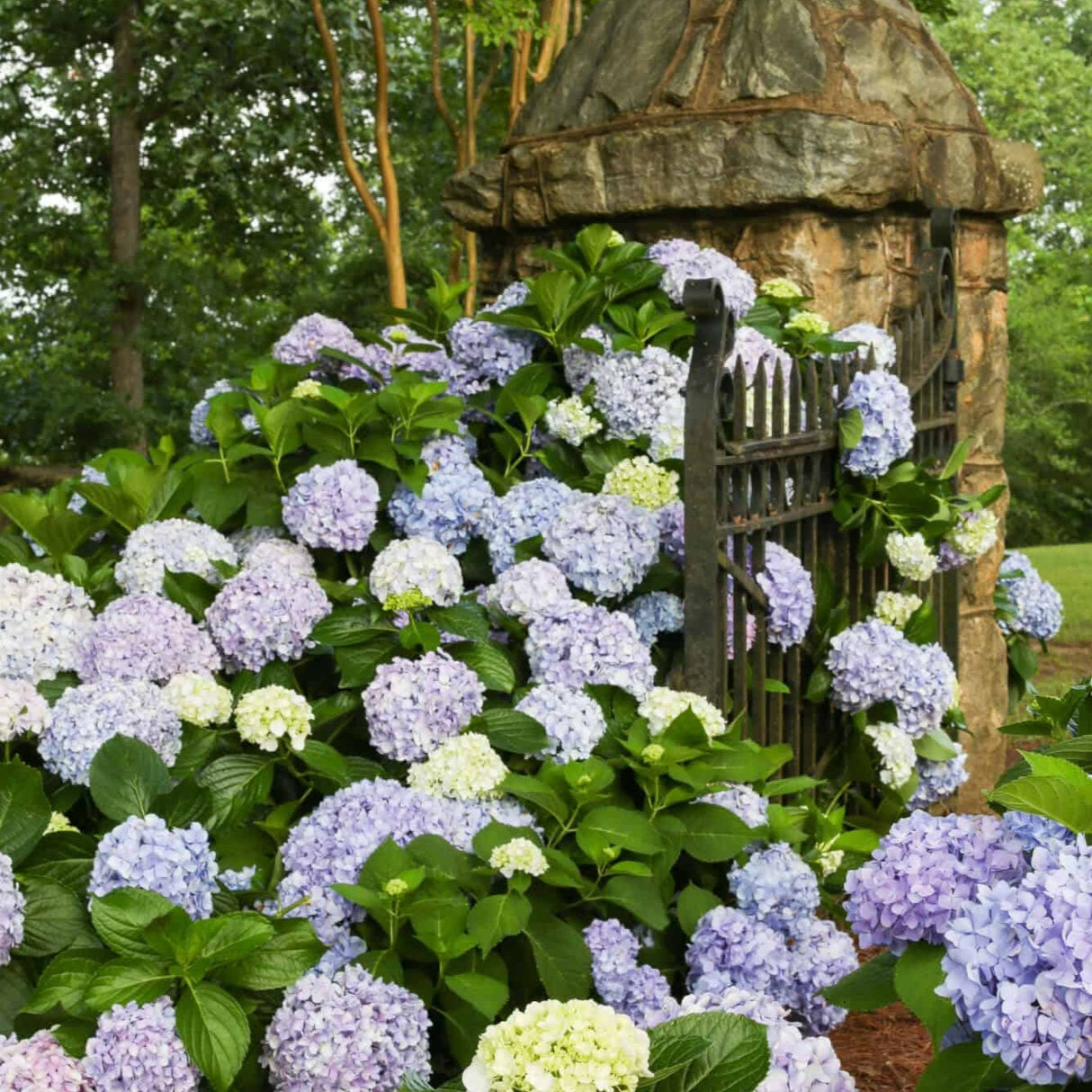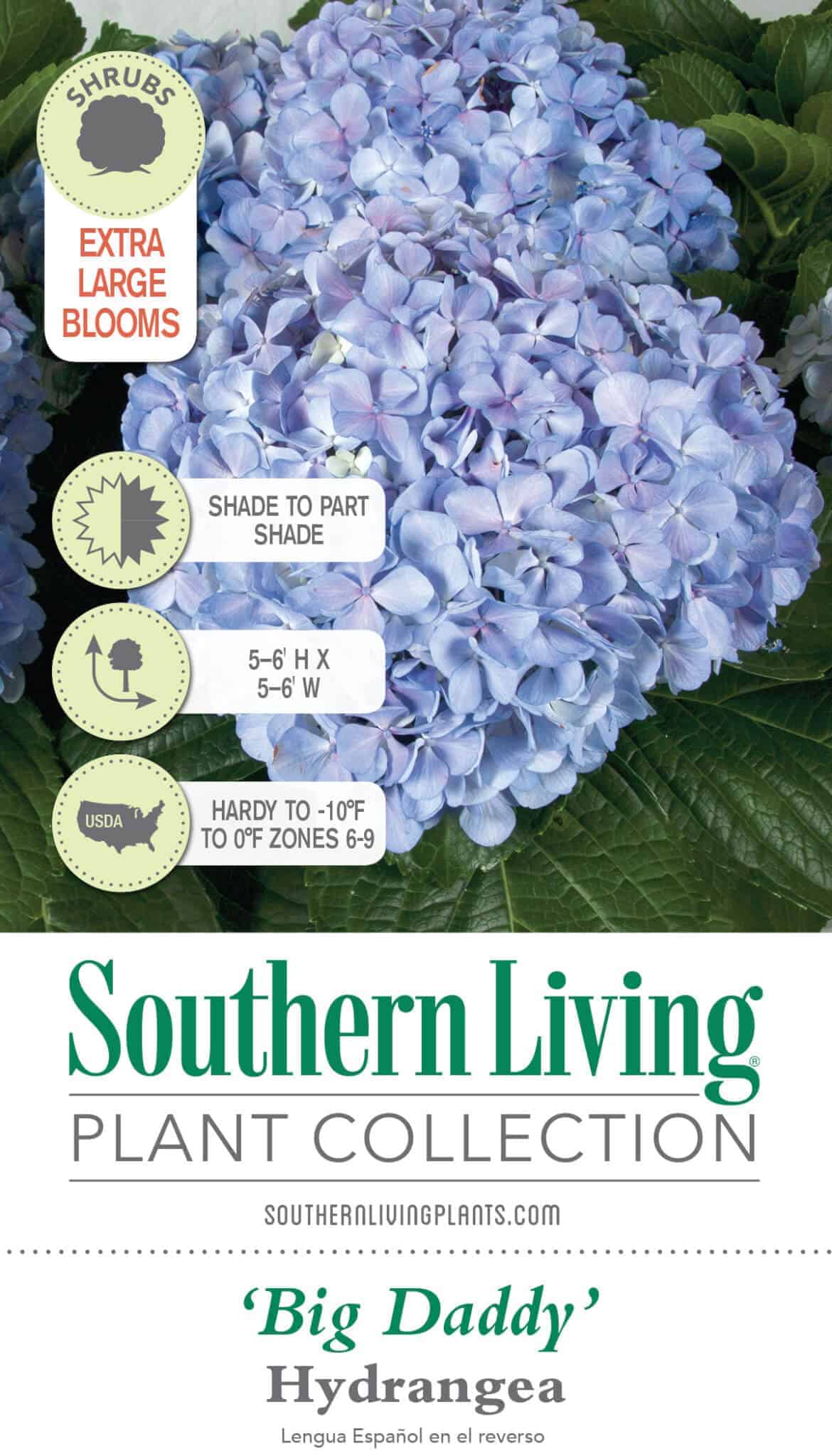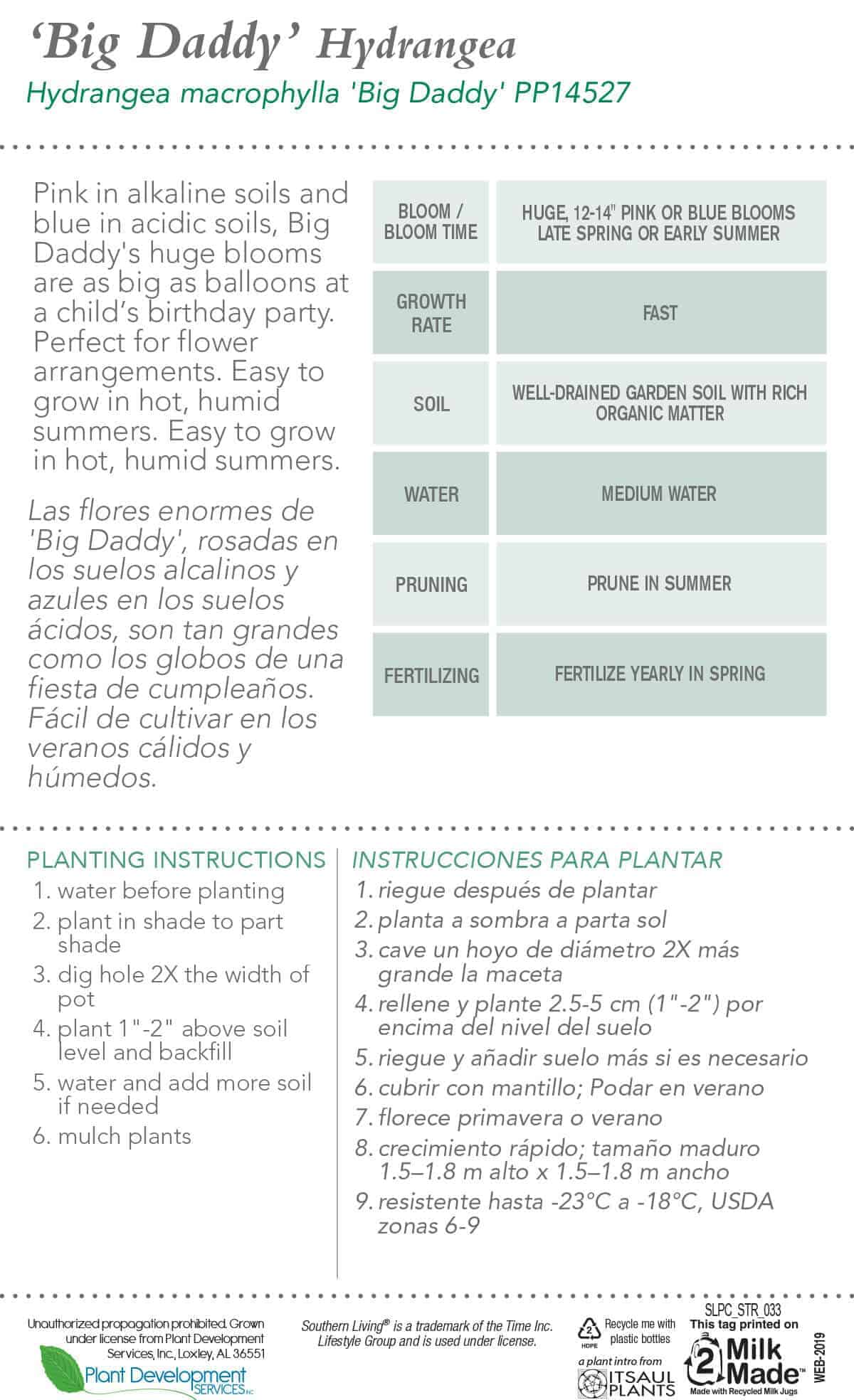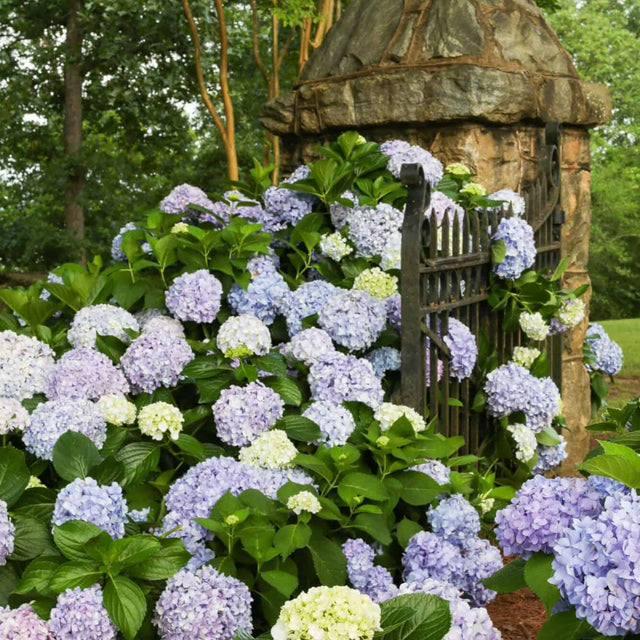Big Daddy Hydrangea
Big Daddy Hydrangea - 2.5 Quart is backordered and will ship as soon as it is back in stock.
Description
Description
The Big Daddy Hydrangea from the Southern Living Plant Collection produces massive eye-catching blooms that are impossible to ignore. Like other Macrophylla hydrangeas, these vibrant mophead bloom clusters are pink if planted in alkaline soils and blue while grown in acidic soils. Expect an extensive initial bloom in early summer, followed by slightly smaller reblooms through fall. Additionally, the Big Daddy proves to be an impressive addition to cut flower arrangements.
When the Big Daddy isn't in bloom, large, serrated leaves will still draw attention. Their glossy surface reflects sunlight beautifully.
Soil alkalizers, such as limestone or hardwood ash, can be used to raise the pH to the desired level, while acidifiers, such as peat moss, can be used to lower the pH.
The Big Daddy Hydrangea reaches a mature size of 5-6' H x 5-6' W. It's guaranteed to shine as a hedge, border, specimen, or container plant.
*The Big Daddy Hydrangea is a deciduous/semi-evergreen plant and will go dormant during the winter months. When this plant is ordered during the Fall/Winter expect seasonal foliage decline(discoloration, spots, leaf drop) or the plant to arrive completely dormant.*
Big Daddy Hydrangea Care
Hardy in USDA Zones 6-9. In addition, this deciduous shrub will go dormant every winter in every zone.
Plant in Partial or Filtered Sun for best results. The Big Daddy Hydrangea can't handle extended direct sun exposure, however, too little sun will result in a decreased bloom cycle.
The Big Daddy Hydrangea needs regular watering after planting, around 3-4 times a week for the first few months. During this time, check the soil frequently to ensure that your plant isn't drying out or staying soggy. Afterward, you can water less frequently, 2-3 times per week as needed. Once your plant has a couple growing seasons under its belt, it will only need watering during, particularly dry periods.
Fertilize in early spring with a balanced fertilizer. Then reapply as instructed by your brand of fertilizer, traditionally in May, and July.
Check out a year-long snip and clip garden from Southern Living Plants
Take a look at the Big Daddy Hydrangea's little sister, the Dear Dolores Hydrangea
Care & Use
Care & Use
Spacing Recommendations
Spacing Recommendations
-
Scientific Name
-
Hardiness Zone6, 7, 8, 9
-
Sun ExposurePart Sun to Part Shade
-
Evergreen or DeciduousDeciduous
-
FeaturesFlowering, Reblooming, Shade Tolerant
-
Feature ColorBlue, Green, Pink
-
UsesContainer, Foundation Planting, Hedge, Specimen
-
Water NeedsMedium
-
Bloom SeasonSummer
Growing Zones : 6, 7, 8, and 9

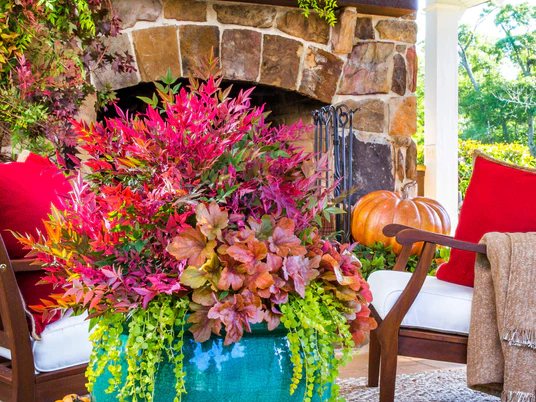
Southern Living Plants
